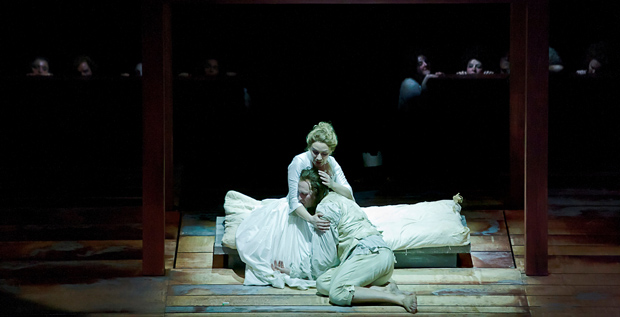Showing @ Festival Theatre, Edinburgh Tue 27, Thu 29 & Sat 31 Mar
William Hogarth’s 18th-century series of paintings depicting young Tom Rakewell’s fall from lovesick swain to madhouse inmate remains one of the most powerful artistic underscores on the love of money as the root of all evil. In 1951, Igor Stravinsky took Hogarth’s two-dimensional narrative and put it to his own dominant music adding a demonic twist as well as some individual and witty ideas from librettists W.H. Auden and Chester Kallman.
The director of this production from Scottish Opera, David McVicar, specifically requested The Rake’s Progress for his return to the company and it’s easy to understand why. This is without doubt a director’s opera. The opportunity to take in Gothic horror, Sheridan-esque comedy, Shakespearean tragedy and even a little panto as we follow Tom’s downward spiral must make this an exciting circus to be ringmaster of.
McVicar is well served by the majestic sets, from 18th-century gardens and the pit of hell, to the costumes, plucked from Gillray or Rowlandson by designer John Macfarlane. His creations, particularly Mother Goose’s Brothel, help keep a sense of liveliness in an opera that on occasion – particularly when Tom is wallowing in self pity – can feel flat.
Stravinsky’s Tom is a little too self-aware of his own fall from grace and his whinging tone is difficult to warm to. By the time he reaches the madhouse however, it’s hard not to feel sympathy and Edgaras Montvidas excellently conveys the character’s bewildered pain. Leah Marian-Jones is clearly not a performer who suffers from personal vanity as she takes on the role of Baba the Turk superbly – the hirsute wife Tom weds for her money.
As is often the case however, it’s the devil that gets the best tunes and here that devil – renamed Nick Shadow – is conjured forth with verve and lip-smacking joy by Steven Page who, resplendent in red and black, strides the stage conducting Tom’s inevitable downfall. This opera was created during Stravinsky’s neo-classical period, a time where he blended the world of Mozart with modernism, so it’s both lyrical and occasionally difficult. But ultimately this journey from joy to despair through the emptiness of wealth is rewarding and often dazzling.


Nice review! I was at the closing night and thoroughly enjoyed it.